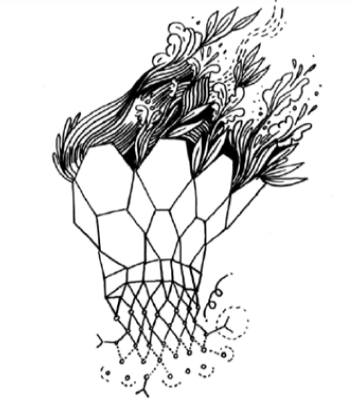
“A shoot will come up from the stump of Jesse; from his roots a Branch will bear fruit.” (Isaiah 11:1 NIV)
In Chartres cathedral, Isaiah 11:1 is set in colored glass, in what is known as the Jesse Tree window. A very old (even for stained glass) window made in the 12th century stands in the northern lancet of the western wall. The image of the window with this post had to be cut in half because otherwise it was too long to be seen on our screens, but you can access a scrollable version at the link at the bottom of this post. The window is like a dream of color, fragments brought together, but it’s a dream that makes sense.
At the bottom of a window, a white tree literally sprouts from the sleeping figure of Jesse (fathers are often tired, I guess). The tree rises to give branch to four kings, with prophets on each side, watching through time. On top of the kings is Mary, and on top of all is Jesus, surrounded by seven white doves the same color as the growing tree.
As with all of God’s promises, the promise in Isaiah 11:1 is given to connect two times: the point in the past when the promise is given, and the point in the future when it is fulfilled. The promise’s origin point states that the shoot will grow specifically from Jesse – not King David, but his father. This promise comes from the Everlasting Father, and is given to another father.
The line would lead to an unexpected point in the future, not to a royal nursery, but to a young woman in the Roman province of Judaea. Mary sits almost at the top of this tree, surveying her cathedral. Like her later namesake the sister of Martha, she sits at the feet of Jesus.
This window is unusual because Mary wears green and purple. In most windows and art, she wears blue. In paintings, the pigment (if they could afford it) would be ground lapis lazuli gemstones making rich ultramarine blue. In glass, glaziers experimented to make all sorts of shades of blue. One particularly distinctive shade made from cobalt and manganese mixed in the glass is named “Chartres Blue.”
Another window on the south wall was made about the same time the Jesse Tree window. This window is called the “Blue Virgin Window,” because Mary wears light blue robes against a deep red background. This other window focuses on Mary at one moment, while the Jesse Tree focuses on her family and lineage extended through time.
The Jesse Tree Window has room for more shades of blue than the Blue Virgin Window, because the blue is in the background. The glaziers probably experimented with combinations of the ash from different trees and different metals to produce the different colors. (I would’ve liked that job.) The blue glass, each shard slightly different in color, blends together into a glowing cerulean sky or crystal sea. The polychrome blue sits behind the robed figures and green leaves that branch out from the monochrome white tree. The blue background surrounds the image and white tree-trunk anchors the center like a pillar.
The colors have been arranged expertly, working together to make an unified impression. These are no longer individual pieces of glass. These comprise an image that is doing something and going somewhere, from start to finish. Where they end is with Jesus, the king who washed his disciples’ feet, the priest who sacrificed himself, and the prophet cut off, nailed to a cross, then raised on the third day according to the Scriptures.
The writer Henry Adams loved the Jesse Tree window and described it at length in Chapter 3 of his book Mont St. Michel and Chartres: “the artist thought first of controlling his light, but he wanted to do it not in order to dim the colours; on the contrary, he toiled, like a jeweller setting diamonds and rubies, to increase their splendour.”
The effect of this was for the colors to harmonize without losing their individual hue and brilliance. Adams describes what this looks like as you step back from a window, so that the colors merge together: “the separate medallions and pictures are quite lost–especially in direct sunshine–blending in a confused effect of opals, in a delirium of colour and light, with a result like a cluster of stones in jewelry.”
This shimmering effect comes from each shard holding its own color while infused with light from beyond itself, outside the walls. Very different colors, when carefully arranged, are illuminated by the same sun to produce a coherent, powerful effect in the pilgrims standing below, drawing every eye upward, to the Lord to whom all authority in heaven and earth is given.
God made each of His children with a unique color. When God’s light fills us, He makes the colors true. God then sets us in place, like a master glazier, to work together as we never could apart, making beautiful pictures that speak to His glory.
(Chartres Jesse Tree window link: https://static.cambridge.org/binary/version/id/urn:cambridge.org:id:binary:20200121120712572-0893:9781107705647:06802figu0109.png?pub-status=%E2%80%A6 )
